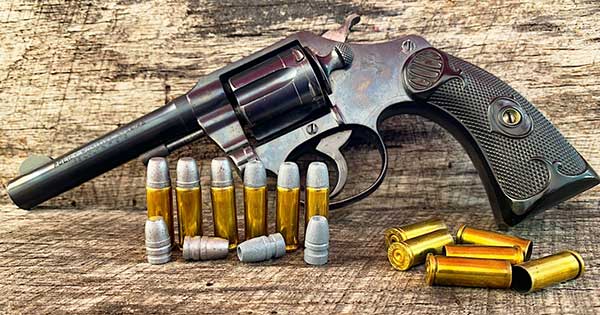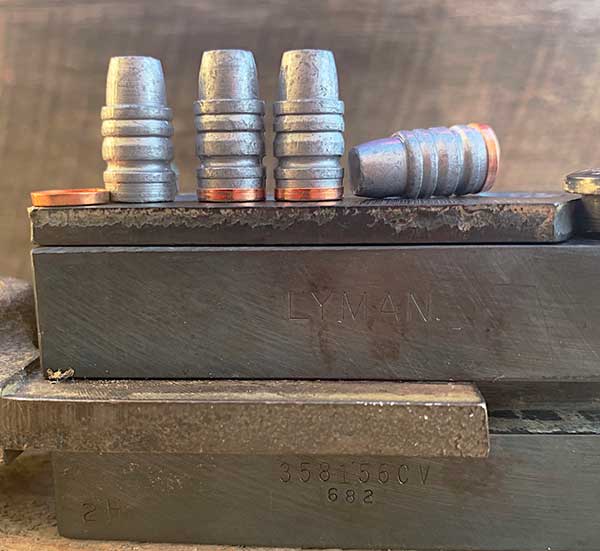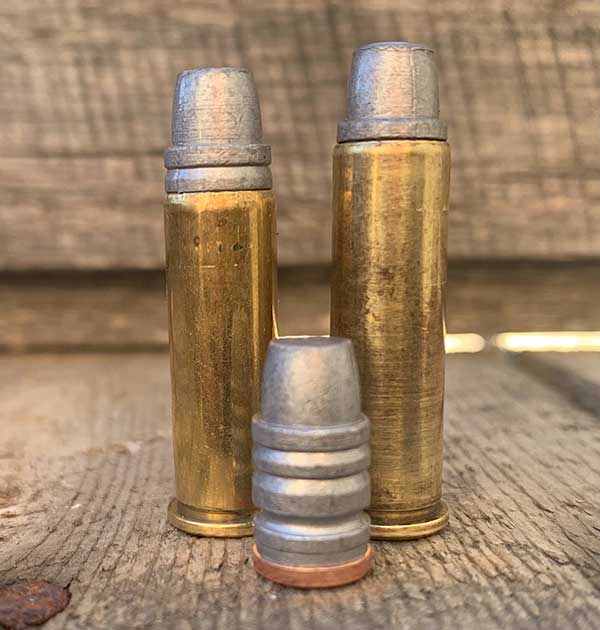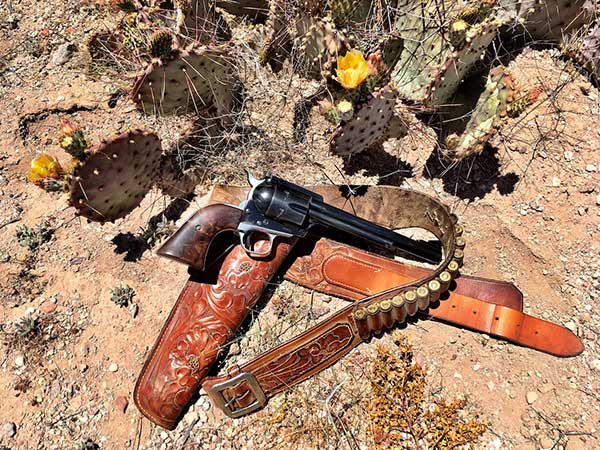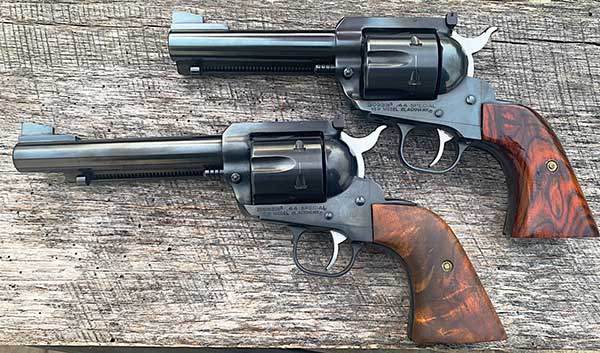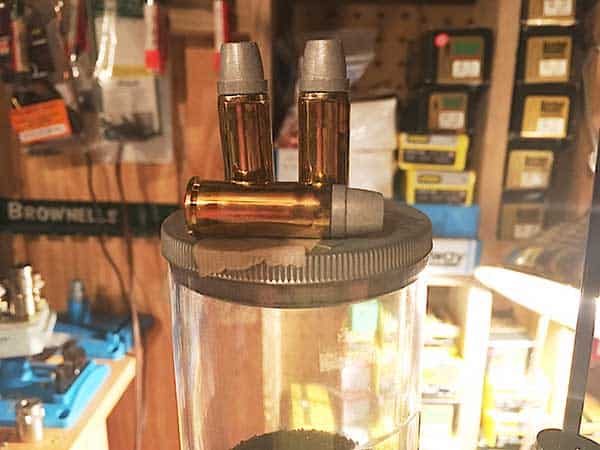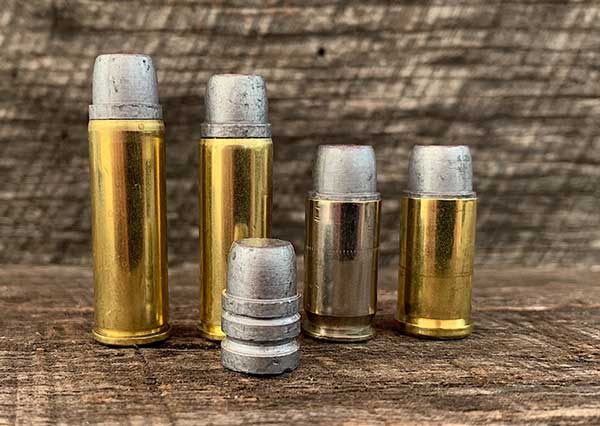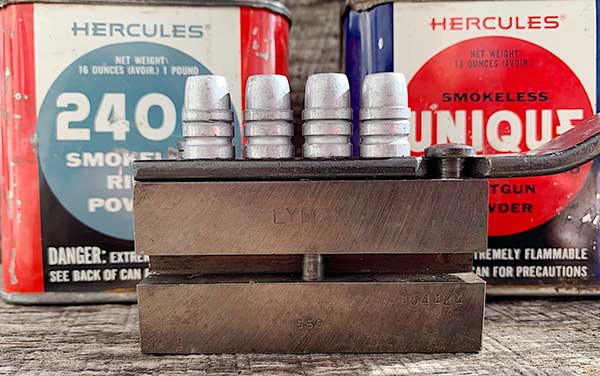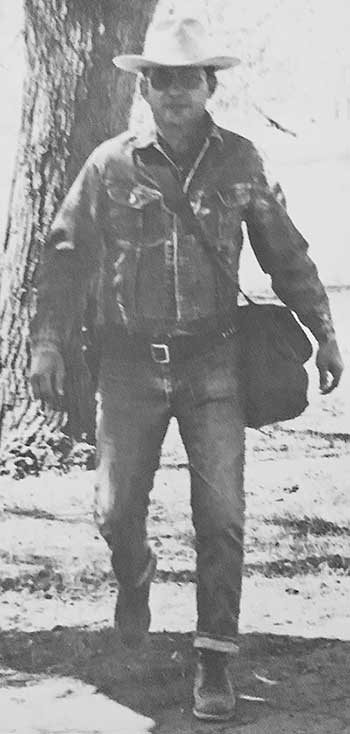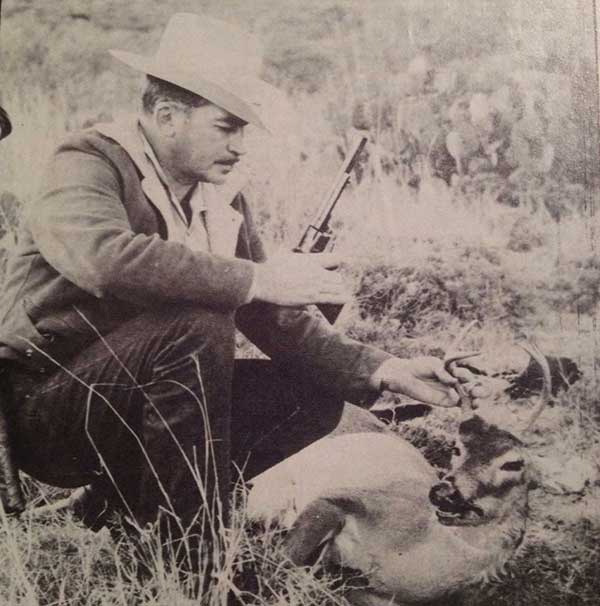Skeeter’s Handloading Philosophy
Fresh from WWII, Skeeter Skelton traded an old hunting knife for a handloading kit. Part of the deal involved instruction on using the old tong-style kit. The Winchester Repeating Arms mold was rusty, and the cavity was pitted, throwing slightly pockmarked slugs, but they worked well enough for Skeeter’s old .44-40 Colt Frontier model.
Skeeter was shown how to neck-size the .44-40 cases, then de-cap and prime them. Powder charges consisted of a case full of unknown black powder, then dumping enough out to make room for the grease-smeared bullet. This is not exactly precision handloading. The bullet was seated and crimped in place without ever sizing the slug.
“Strangely enough, this unsophisticated fodder performed satisfactorily in my thumb-buster and allowed me, for the first time, to shoot a centerfire handgun as much as I felt like it. During the quarter century that passed since that first handloading session, I have stuck to one premise: I like to keep it simple,” he said.
Just One
Over time, Skeeter accumulated better molds, bullet designs and powders as they became available. A realization became apparent. If he was to get the best performance from his handguns, he needed to settle on one basic load for each one. Otherwise, he’d spend all his time at the loading bench and target range, testing loads, adjusting sights, and worrying about pressures and case life. He’d rather enjoy shooting his guns than working on load development. Who wouldn’t? This one load for each gun system served him, as well as us, very well. Here are a few of Skeeter’s favorite loads.
.32-20
Skeeter progressed from his tong toolkit to a Pacific Super Tool press. He settled on Lyman’s 31133 bullet mold and Unique powder. The cast slug weighed 105 grains in hollow-point (HP) form, providing him with everything he wanted when loaded over 5.5 grains of Unique in the .32-20.
.32 S&W Long
Skeeter’s 7.5” Colt SA had a spare cylinder in .32 S&W Long, and he found the straight cases were better for reloading since he could use carbide dies. A charge of 4.0 grain of Unique behind the 31133 100-grain hollow points shot close enough to the same point of aim as the .32-20 hand load, expanding well on coyotes and Texas vermin. Years later, he used the same load in a Smith K-32, finding it the sweetest of small game guns.
.38 Special
Skeeter loaded more .38 Specials than any other caliber, a common theme for most handgunners. The .38 Special was the first handgun cartridge I handloaded for, too. What home didn’t have a .38 Special? Skeeter wasn’t a fan of full wadcutter bullets or ultra-light loads for the .38 Special. He was a fan, however, of the Lyman 357446 and the gas checked 358156, casting them 1 to 15 tin-in-lead and sized .357”.
He noted, “As accurate as wadcutters are at close range, these bullets cut just as clean a hole in the target and maintain accuracy and killing power at much longer distances.”
For heavy-duty .38 Special and .357 Magnum loads, Skeeter used the 358156 gas check slugs because they wouldn’t lead the barrel like plain base bullets. He thought the 358156 was the most accurate cast bullet he had ever used and an excellent game-getter.
The HP version offered spectacular expansion, while the solid provided the best in penetration and shock, being particularly good for taking small table game without excessive meat damage.
The 358156’s two crimp grooves added versatility to the slug. The top groove was used for loading .357 cases and standard velocity .38 Special loads, while the lower crimp groove was used for the .38 Special. This increased powder capacity while lowering pressures. Skeeter used a heavy load of 13.5 grains of 2400. It was his favorite, giving him around 1150 fps out of most guns.
For the .357 Magnum, Skeeter preferred 15 grains of 2400 for better accuracy, less recoil and longer case life.
Note: The heavy .38 Special cartridges should only be fired from .357 Magnum revolvers or .45 frame .38 Special sixguns such as the Colt SA, Colt New Service or S&W .38-44. Skeeter carried this round for everyday use in his .357 guns, having taken more game with it than any other handload, up to and including antelope, turkey and javelina.
The .44s
Lyman’s 429421, designed by Elmer Keith, and Ray Thompson’s gas-checked 429244 semi-wadcutter got the nod as Skeeter’s favorite .44 slugs. As cast, the Keith weighs around 250 grains. Both are available as HP, which are extremely destructive on small game at the higher velocity levels.
The 429421 plain base bullets never gave him any leading problems in his .44s, so he chose it over the 429244 to save on applying and expense of gas checks. When the .44 Magnum came out, Skeeter quit using heavy handloads in the .44 Special.
His famous “Skeeter Load,” using a Keith bullet sized .429” and over 7.5 grains of Unique, was hotter than factory .44 Special loads but much milder than .44 Magnum loads. Velocity ran around 940 fps and was his favorite. Skeeter obtained this load from none other than Elmer Keith, but he wrote and used it so much that it became “Skeeter’s Load.”
The same 429421 went into his .44 Magnum ammunition, with a charge of 21 grains of 2400, rather than Keith’s listed 22 grains. Skeeter explained, “The nominal velocity loss is noticeably easier on both gun and shooter, but still speaks with enough authority to have bagged me mule deer and many lesser species with ease.
.45 Colt
“The .45 Colt has been pronounced dead by many a self-appointed coroner. Around my diggings, it is as spry as ever, and I shoot a lot of .45s in Colt SAs and my New Service,” said Skeeter. This statement alone makes him forever endeared in my heart.
Like most of his loads, Skeeter kept it easy, settling on a charge of 9.0 grain of Unique behind a 250-265 grain cast bullet. He preferred Lyman’s 454424 semi-wadcutter for all purposes, stating the fat, flat-faced hunk of lead is an excellent game killer and notably easy to cast. The profile of the 454424 damn near looks like a full wadcutter with its huge meplat. Skeeter cast them from a mixture of 1 to 15, sizing them .452”.
Easy Going Biscuits
Skeeter Skelton was well-loved for his relaxed, lovable personality, which included much humor and a friendly demeanor. His approach to handloading was the same. He’d rather enjoy a day of roaming around and shooting in his beloved high desert than work on load development.
Notice how Skeeter used a lot of Unique for many of his handloads? Again, keeping it simple is the secret to a happy life. Combined with a barn full of “horse sense” and an easy-going demeanor, his philosophy on guns, handloads and shooting reflected his relaxed lifestyle. He loved his friends, guns and Henry McKenna.
Skeeter also had the ability to make one feel good after reading his stories or shooting the same guns and loads he did. He summed it up best when he said, “When relaxing and enjoying the evening breeze is indicated, my pet loads are like my mom’s sourdough biscuits—no recipe is needed.” You can’t beat that!

